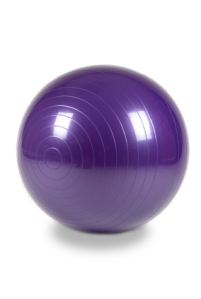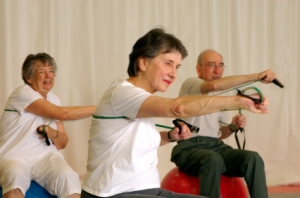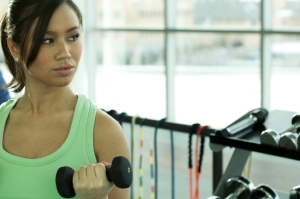I can’t figure out why, but people universally neglect to train their legs. It’s a funny thing, since proper leg training will dramatically deliver total body results.
Walk into any gym and you’ll see the bench press taken, the dumbbells being curled-and an empty squat rack in the corner.
Leg exercises are tough, I won’t deny that, but the benefits are more than worth the exertion.
A Case for Your Legs
Your legs are a major muscle group, so it’s no surprise that training them will get you big time results. Training your legs will…
- Melt fat from your body. As I mentioned above, leg exercises are tough. Your legs are a large part of your body, so each exercise literally moves your whole body. This is precisely why a good leg workout will fire up your metabolism to melt fat away. You’ll burn more calories while exercising your legs than any other body part.Due to the intense nature of a leg workout, your metabolism becomes elevated for more than 24 hours. That means that for an entire day your body continues to burn extra calories without any extra effort on your part. Who wouldn’t love that?
- Build strength for everyday life. How often do you use your legs? Most of us depend on our legs constantly throughout the day-so wouldn’t it make sense to strengthen our individual mode of transportation? Kind of like putting a super charger on the engine of your car.Exercising your legs isn’t only about increased strength; you’ll also improve your coordination and balance. This means that you’ll be able to do and experience things that you otherwise would have missed. You only live once, right?
- Uncover natural muscle shape. Let’s be honest, toned legs are attractive. I’m not saying that you’re legs will bulge with muscles (unless we trained you for that), but I am saying that consistently training your legs will uncover your natural toned shape.Many of my clients discover a whole new level of confidence after getting their legs back into shape. Women especially enjoy the freedom to wear shorts or a skirt without feeling embarrassed to show their legs. Wouldn’t you love that freedom?Oh, and I should tell you that as you strengthen your legs you’ll also reduce the risk of injury to your lower back because you’ll actually learn to pick things up off the ground the right way.
Best Leg Exercises
Now that I’ve convinced you to pay more attention to your legs, here are three of the top exercises you should do. Each of these exercises have dozens of different variations, so have fun and always keep your workouts fresh and challenging.
- The Lunge: Start with your feet together, take a large step forward and bend your knees down into a lunge position. Exhale as you press yourself back up to a standing position, or continue through with your step into another lunge.
- The Squat: Start with your feet shoulder width apart, inhale as you bend your knees, keeping your back straight. Be sure to keep your knees from going past your toes. Exhale as you push back up to a standing position.
- The Dead Lift: Grip the barbell with a mixed grip (one palm faces you, one doesn’t). Allow the barbell to hang down in front of you as you stand on the platform with your feet shoulder width apart. Lean forward at your waist, keeping your back flat, and bend your knees, bringing the bar down past them. Exhale as you straighten your legs and lift the bar up. When you are standing upright lean back slightly and squeeze the muscles of your lower back. Hold this contraction for a moment. Inhale and slowly return back down to the starting position.
By no stretch of the imagination are these three the ONLY leg exercises out available. And that’s the other great thing about training your legs… you have tons of options and variations.
Want to know more about leg exercises and which ones are the best for you? Are you finally ready to get into the best shape of your life? Let me help.
Contact me today and we’ll schedule a consultation where you and I can assess your goals and I can show you the fastest and safest way to reach them.
Kristy Lee Wilson



 Posted by ozfitpro
Posted by ozfitpro 








